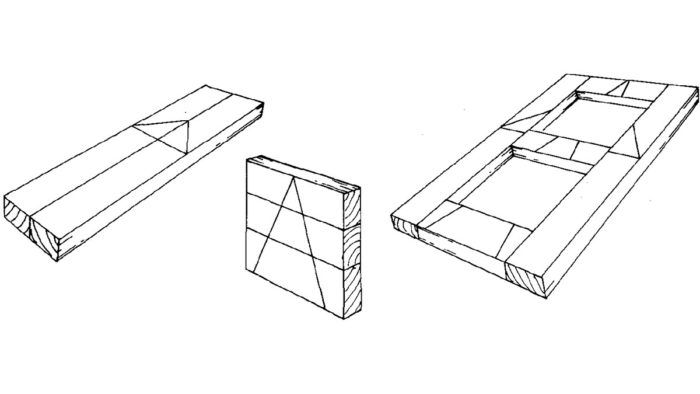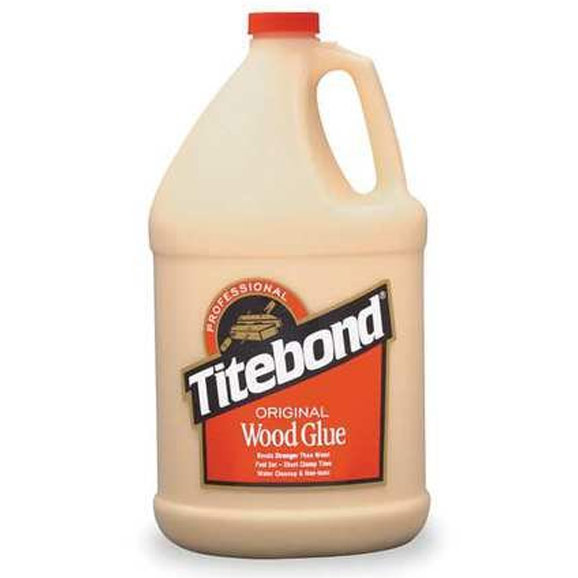
Synopsis: Textbooks ignore marking, writes Adrian C. van Draanen, and in this article, he explains the triangle system of marking your stock so you know, from stage to stage, which piece is which and which end and face should go where. The core of the idea is that the triangle is an isosceles triangle and it must point up, or away, from you, and each piece of wood must have two lines of the triangle on it. When work is simple, as with a tabletop, this system is less valuable than it is with drawers or something more complicated. Many drawings help illustrate how the system works.
Suppose you are making half a dozen drawers. You have cut all the pieces for them, and they are neatly stacked up. Your next steps are dovetails and grooves for the bottom. As you pick up a piece, you can probably tell whether you are holding a front, side or back. But can you tell which way is up, or which is the outside? Can you tell the left sides from the right? If the drawers are of different sizes, can you find matching pieces without remeasuring?
If you can answer “yes” to all these questions, you must have an adequate system for marking your work. If not, I’d like to suggest the triangle method.

bundle.
Textbooks ignore marking. One is often advised to “mark the face,” or “mark the top.” But a particular method is never mentioned, and it is left to the worker to adopt or develop a system. Hence the use of lines, letters, numbers and other devices.
European carpenters and cabinetmakers use a system that employs a triangle, and nothing else. This system is widely used, and it is taught in trade schools. But it doesn’t seem to be known outside Europe.
The rules of the system are:
- the triangle is an isosceles triangle and it must point up, or away, from you;
- each piece of wood must have two lines of the triangle on it.
It is possible to take away each piece and put it back in the same place later. And each piece can immediately be identified. If, for instance, you were holding this piece, you would know right away that it is an inside piece, located to the left of the center of the panel.
If you had picked up this piece, you would know that you were holding it upside down. You would also know that it is the rightmost piece of the panel.
A glued-up tabletop is similar to a panel that has been rotated 90°.
You may draw the base of the triangle on the tabletop, but it is not required and in practice it is never done. Look at each board and you’ll find two lines, the two sides of a triangle that points away from you.
To view the entire article, please click the View PDF button below:
Fine Woodworking Recommended Products

Titebond I

Jorgensen 6 inch Bar Clamp Set, 4 Pack

Bessey K-Body Parallel-Jaw Clamp






















Comments
Great old article, unfortunately the PDF seems to be missing some critical text
PDF is missing some sentences... :(
Log in or create an account to post a comment.
Sign up Log in